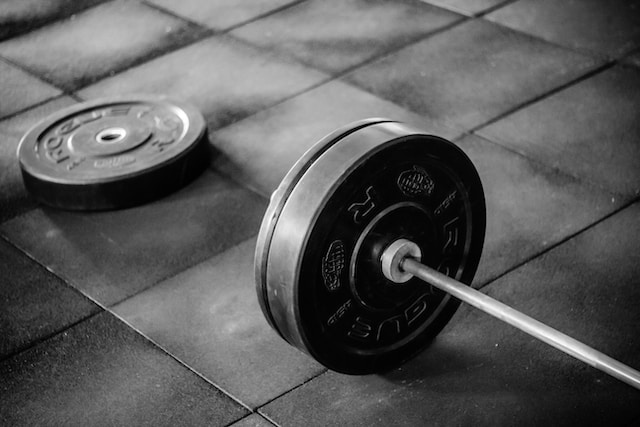How to Progressive Overload: Building Strength & Muscle
Working out can be as hard as it is enjoyable – especially when you don’t see the results you want. Not achieving your expected results can break down your resolve and drive to continue working out. However, there is a simple solution anyone can include in their regimen to drive results: progressive overload. If you haven’t heard of it before, don’t fret. We are here to give you the best tips on how to progressive overload.
The main draw of this workout method is that you do not need to change your exercise routine. If you have found a routine that excites you and you enjoy, changing it can be frustrating. It allows you to improve your current regimen without changing everything around.

What Is Progressive Overloading?
Progressive overload training is an exercise regime people generally apply to strength training. It involves repeatedly increasing the weight, frequency or duration of time per strength conditioning exercise.
By doing this, you are increasing the demand on your muscles and allowing your body to exercise heavier gradually.
The idea here is to gradually increase the intensity of your exercise and allow your body time to adapt. Going too fast will cause strain, muscle damage or even injuries! Any of these can leave you out of the gym for even longer.
Even though people generally apply progressive overloading to muscle training, you can use it in every aspect of your workout routine. For example, if your main focus is on cardio and increasing your cardiovascular health, progressive overloading can be helpful. Steadily increasing the duration of cardio per day or week is progressive overloading.
As a general rule, your workout should increase by no more than 10% per week. The key here is building muscle faster but in a safe way that doesn’t cause damage. If you’re worried about overdoing it – don’t worry; follow our guide on how to progressive overload.

How to Progressive Overload Bench Press
One of the most popular ways how to do progressively overload is in strength training by lifting weights. By gradually adding additional stress to your muscles, they can break down, rebuild and become stronger. This slowly builds up muscle endurance without causing strain or damage to your muscles.
Before increasing weight, you must have good form while exercising. Your form will ensure you exercise your target muscles and prevent excess strain. If you are unsure of your form, you can ask a personal trainer for some tips!
Similarly, before increasing weight, it is essential you do not increase too fast. Before increasing, you should be able to comfortably do 10-12 reps with your current weight. Then, add no more than 10% extra weight, and work your way back up to 10-12 reps.
Example of how to progressive overload bench press:
- Week 1: Start with a weight you can comfortably lift with a mild strain. Begin with 10 – 12 reps of bench press with your chosen weight. Keep the same weight for a few weeks until you can complete those 12 reps without huge strain.
- Week 4: Once you have worked up to 10 – 12 reps of bench press, you can progressive overload. Choose a weight no more than 10% more than the weight you’ve been using. Repeat the process of working up to comfortably doing 10-12 reps.
- Week 6: Repeat the process. Select a weight 10% higher again until you can comfortably do 10-12 reps. You can continue increasing gradually and continuously make gains.

How to Progressive Overload – Increasing Reps
Instead of increasing weights, you can increase the overall amount of reps per exercise. This type of progressive overloading is fantastic for someone who doesn’t want huge muscle growth. Increasing reps is an excellent way to maintain healthy muscles, rebuild strength and retain that strength in your target muscles.
Increasing reps is a fantastic introduction to how to progressive overload, and it can be as intense as you want. Similar to increasing weights, you can use this type of progressive overloading in the majority of your current exercises.
Example of how to progressively overload by increasing reps:
- Week 1: Choose a weight for your exercise, such as a barbell for squats. This weight should be one you can do relatively comfortably for the first eight squats before you begin straining. One the first week, squat ten reps with the barbell.
- Week 4: Repeat the squats with the barbell using the same weight as last week. This time, you can do 12 reps with the barbell. By rep 11 and 12, you will begin feeling the strain. You can keep pushing yourself to those 12 reps for a few weeks until they no longer strain as much.
- Week 6: Continue using the same weight barbell and repeating the squatting motion. By week six, you can aim to complete 14 squats and then continue. From here, continue building up the number of reps you complete with the same weight. Eventually, if you choose, you can move on to increasing weight too.

Top Tips on How to Progressive Overload at Home
If you want to do progressive overload but workout at home, you may wonder if it’s still possible. Not everyone has access to proper gym equipment, dumbbells and other weights. However, this training is still entirely possible at home!
Here are some of the best ways how to progressive overload at home.
How to Progressive Overload – Increase Exercise Intensity
There are plenty of ways to progressive overload while training at home. Increasing exercise intensity is an excellent and effective method of progressive overloading at home.
Increasing the intensity of your exercise is something you can apply to all types of training, including cardio and strength workouts.
You can increase exercise intensity gradually or more fast-paced. The idea here is to challenge your body more and more every week. You can do this by increasing your exercise in a set period or making your heart pump faster.
Example of how to progressive overload by increasing intensity:
- Week 1: There are numerous ways to progressive overload at home for cardio workouts. For instance, you could start on week one by jogging for 10 minutes, followed by 30 seconds of sprinting. At the start, it may be difficult to do complete cardio. Once you’re comfortable with your chosen intensity, you can move on.
- Week 4: By week four, you can begin increasing the intensity. You could increase your jog to 15 minutes, then follow it with 45 seconds of sprinting. The key here is to get to a level where this no longer strains too much. Then you can continue progressive overloading.
- Week 6: Once you have the 15-minute jog / 45-second sprint down, you can increase the intensity again. Up your jog to 20 minutes, followed by 60 seconds of sprinting. Every few weeks, you can continue to improve your jog/sprint times to increase the intensity of your cardio exercise progressively.
How to Progressive Overload – Increase Exercise Duration
Another effective way how to progressive overload while training at home is by increasing the duration of your workout. Similar to increasing intensity, you can also apply this to various workout techniques.
Increasing the duration of your workouts can help improve cardio and gradually build muscle strength. Like other forms of progressive overloading, it is vital to allow yourself rest time too. Taking time off every couple of days is essential for muscle repair.
Example of how to progressive overload by increasing duration:
- Week 1: At the beginning, continue doing your exercise for the same period. For example, say you swim for 30 minutes on workout days. Continue swimming for 30 minutes for 3 or 4 weeks to build up a good resistance to this duration of time.
- Week 4: By week 4, you could swim for 30 minutes easily. Now, you can progressively overload your swimming duration by increasing it to 45 minutes.
- Week 6: Once you are comfortable swimming for 45 minutes, you can increase the duration again. Continue to increase the duration in short intervals over the weeks gradually.
How to Track Progressive Overload for the Best Results
As you learn how to apply progressive overload to your routine, tracking your progress is essential. Tracking can be a great way to see that you are on the correct exercise track.
You can also encourage yourself by seeing how far you have come since you started! There are a couple of ways you can learn how to track progressive overload, such as:
- Gym tracking app: There are apps for everything, and progressive overloading is no different. Apps help you track your remarkable progress. Apps like the Strong Workout Tracker available on Apple have useful progressive overload tracking features.
- Smartwatches: Once upon a time, watches just told the time. Now? Your smartwatch is basically a mini phone. Many smartwatches, such as the Samsung Galaxy Smart Watch 5, have gym tracking features. Using the watch itself or the app on your phone, you can enter your workout details. You can include the duration of time or how many reps per exercise you complete.
- Manual tracking: All the smart electronic devices are fantastic, but they aren’t necessary. You can just as easily manually track your progressive overloading. You can use a gym tracking diary, such as The Gym Medition Exercise Journal. Alternatively, pen and paper work perfectly fine too!

How to Progressive Overload Safely, Without Muscle Damage
Like everything in life, progressive overloading can be harmful if you do too much. The key here is balance by building muscle mass slowly but effectively. There are some top things you can do when figuring out how to progressive overload safely:
- The 10% rule: Keeping your increases up to a maximum of 10% is a great way to avoid muscle strain. Whether this be with your workout time, intensity or weight – a gradual increase is key.
- Don’t skip rest day: When you’re on a workout roll, it can be very tempting to power through. However, muscles are repaired and rebuilt during rest times. As attractive as it is to skip a rest day, you achieve better results when you rest between workouts.
- Listen to your body: When you need rest, don’t push your body. Don’t cause unnecessary strain and damage by stretching your muscles too far. If your body is incredibly sore, give yourself grace. Take it easy for a day or two, and then get right back to it.
- Hydration and protein: Your body expels a tremendous amount of energy while working out. It is important to re-nourish it and give your body back what it needs. Hydration with either water or electrolytes is a great way to refresh your body. You can use protein supplements like bars or powders to refill your protein reservoirs.
Wrapping up: How to Progressive Overload
If you are searching for a way to maximize your workout routine, progressive overload can be a huge help. Once you know how to do progressive overload safely and correctly, it’s an easy process to introduce to your workout routine.
Maximize your workout potential and see better results faster with progressive overloading.


